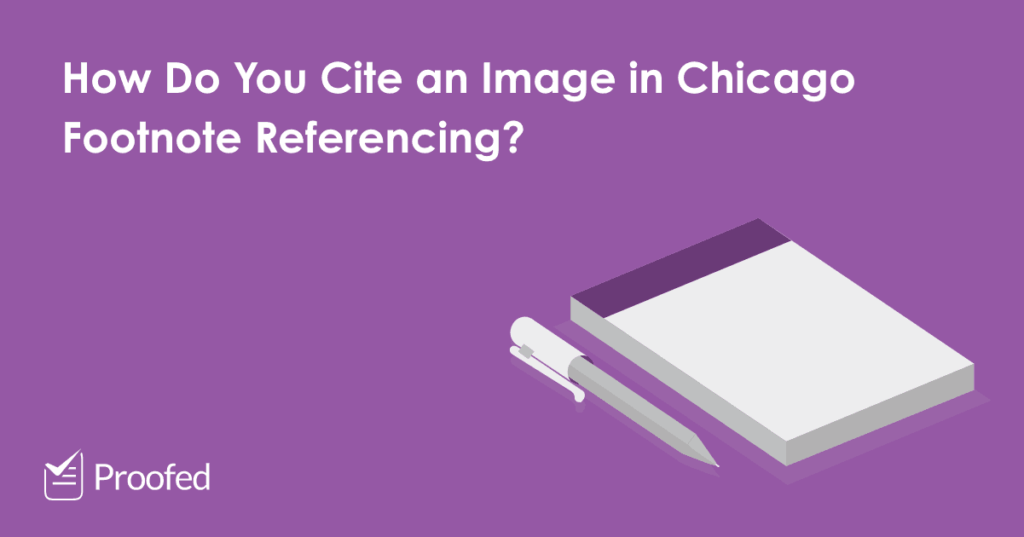Need to reference an image in an essay? Then make sure you cite it, too! In this post, we look at how to cite an image in Chicago footnote referencing. We’ll also look at how this works when reproducing an image published elsewhere.
How to Cite an Image in Chicago Footnote Referencing
If you are simply mentioning an image in the text of an essay – not reproducing it in the essay itself – you can simply add a footnote citation for the source:
We see this in the first illustration in the book.1
The exact format for the citation will depend on where you found the image. If it is from a published book, article, or website, you will need to cite this. The only difference is that you can use a figure number as well as a page number.
For instance, a footnote citation for an image from a book would look like this:
1. Timothy Smith, David Ramirez, and Brianna Kelly, The Origins of Perspective (Chicago: University of Chicago Press, 2019), 17, fig. 1.
For a standalone work (e.g., from a gallery), there is a separate format:
n. Artist name, Title of Work, date of creation, medium, other details (if known), location, URL (if applicable).
So, for instance, we could cite an image from a gallery as follows:
2. William Hogarth, Francis Matthew Schutz in His Bed, 1760, oil on canvas, 63 × 75.5 cm, Norwich Castle, Norwich, https://artuk.org/discover/stories/william-hogarths-francis-matthew-schutz-in-his-bed.
The key is to give enough detail to fully identify the artwork you are citing.
Reproducing an Image in an Essay
If you need to include the image in your essay, while you can provide a footnote citation, you can also put key source information in a caption.
Find this useful?
Subscribe to our newsletter and get writing tips from our editors straight to your inbox.
In practice, a caption citation would look like this:
Keep in mind, though, that images may be copyrighted! This isn’t a problem if you’re writing an essay, since educational uses are usually exempt from copyright. But it will apply if you’re writing something that will be published!
How to List an Image in a Chicago Bibliography
To include images in a Chicago bibliography, as with citations, the format depends on where you found the image.
For published images, you will use the format for the container volume. With a book, for instance, the entry in a Chicago bibliography would look like this:
Smith, Timothy, David Ramirez, and Brianna Kelly. The Origins of Perspective. Chicago: University of Chicago Press, 2019.
For a standalone image, meanwhile, the format would be:
Artist Surname, First Name. Title of Work. Date of creation. Medium, other details (if known). Location, URL (if applicable).
As such, we would list Hogarth’s painting in the bibliography as follows:
Hogarth, William. Francis Matthew Schutz in His Bed. 1760. Oil on canvas, 63 × 75.5 cm. Norwich Castle, Norwich, https://artuk.org/discover/stories/william-hogarths-francis-matthew-schutz-in-his-bed.
Hopefully, this has helped you understand how to cite an image using Chicago footnote referencing. And if you’d like an expert to check your academic writing, we have proofreaders available 24/7.
